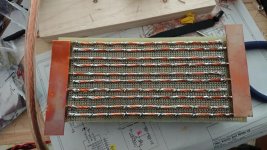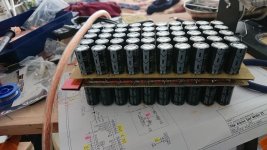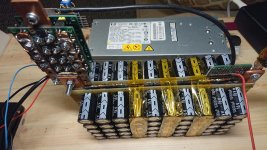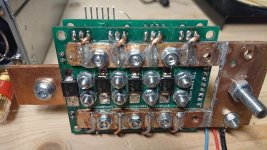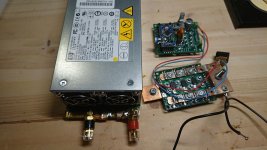amberwolf , it is a reward for this topic that post 1000 has been reached with such an ecological presence.
Until this topic I never thought in USA could be 1 person able to arrange his life without a car and even being happy that way.
I wish you can be imitated by many more , that extend the use of ebikes and reduce as much as possible (especially in citys) the abusive use of high C02 emiting cars. Any way , please don' t forget my suggestion of how to get 1 surplus 12V 65Ah at your closest car scrapyard -> try a pay in advance . If you also find an attractive blonde agent at the scrapyard and she gets your phone to advice when bat available , who knows if battery bussines can be better ?

If you live in a State with a lot of sun to allow ebikes , you could even have a basic solar system to charge your ebikes. Lead acid surplus car batteries still the cheapest solar storage system if you don't discharge them below 70% capacity (they would ruin fast).
Curiously
a new advantage has arisen for the still virtual 2 parallel batteries spot welder -> it
could work exclusively with sun power energy , allowing battery spot welding in places
without laying electric -> Africa , you are in this topic too.
A single 100W solar panel (or even 1 cheap 4W 6''x6'' 2$ cell) could simply charge the 2 batteries and once above 13V they could fire several tab welds or even charge the 18650 batteries afterwards.
But by the moment 2 lead acid parallel tab welder is virtual yet and fechter has noticed our main limitation ->
it has to be switched off with controled duration.
At this point instead of going ambicious as nemo did or sophisticated as Texaspyro did , I want to go
simple and experimental in homage to RLT , the author of the best solution till the moment for the 100$ limited home builder ->
done ,
detailed and
tested.
Electrical security has also been mentioned in this long topic , and I will not be the one who forgets that. This is the reason why I slightly modified Jeremy schematic pulling one of the contacts of the foot pedal to ground.
Under certain severe circumstances
lead acid batteries have even exploded , and we would have H2SO4 (one of the most dangerous acids) flying to our clothes or skin.
It is true that the H2S04 in lead acid batteries it is not pure , it is slightly concentrated , but even knowing that I would expressly suggest
to have a clean 5 litre clean tap-water tank near the batteries for prevention purposes.
Thinking in security and in keeping RLT still in contact with this topic , I would like to suggest a new element that would bring security to the circuit , security when all the rest of the parts fail , and security to cut current flow in that extreme circumstance.
I am talking about a
2000 Amp DIY foot pedal.
I did one of this in the past and it is not difficult or expensive to build.
I want to keep RLT spirit alive -> experiment simple device before putting mosfet into battle.
This is my simple suggestion sequence :
+ Build the DIY 2000 Amp foot swicht (circuit open released when not pressed)
+ Put it in series with main batteries negative return conductor from welder.
+
Foot-press it strongly when you are ready with 2 electrodes over a tab and want to perform a spot weld.
+ Add a circuit delayer to fire Jeremy relay (for example , replacing the standard foot pedal in Jeremy schematic with the electronic delayer of discretes seen in yellow schematic I posted for car diesel heathers) .
+
5 seconds after main DIY 2000 Amp foot switch is pressed ->
delayed circuit fires Jeremy relay
+ Then
thyristor fires current from 2 lead bats to weld the tab.
+ A SPECIAL FUSE IN SERIES with welding conductor to electrodes
IS BURNED AFTER THE WISHED TIME DURATION and current stops.
+ User
rises the foot from pedal
1 or 2 seconds after weld shot sound (preventing fuse failed and cutting undesired still current in circuit).
That was just a practical sequence , no schematic yet.
This would be 100% per 100% experimental , especially the FUSE part.
This would be terribly unpractical circuit , because
a fuse should be burned for every spot weld.
But fascinating from the point of view of those who like experimenting , because you would gain deep knowledge of how fuses work -> a 10Amp fuse can reach hundreds Amp before fusing.
Could be used comercial cheap fuses , or even DIY FREE fuses choosing freely material , diameter and length.
And an important final conclusion , if in spite of the little practical solution , it finally could produce a clean nice tab weld ,
then it would be the moment to replace the thyristor + fuse by a more efficient , practical an sophisticated method.
But the curious thing is that even for that final efficient solution (using mosfet) , the rudimentary 2000A DIY foot pedal
still would be an esential part of the circuit .
RTL , still want to experiment ?
Even if you are tired for that , you have opened a topic where electrical engineering principles have appeared with strength and I admire you for that.



